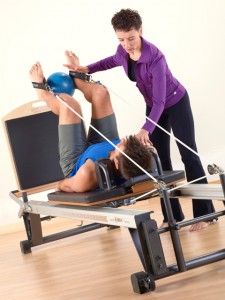According to the Bureau of Labor Statistics, tendonitis causes more than 70,000 people to miss work per year. This is just one of many reasons why it is important to understand the symptoms of tendonitis so that you can avoid not only the pain but the inconvenience it...
LATEST BLOGS
Husband and Wife of 54 Years Undergo Joint Replacement Surgeries On The Same Day
Premier Orthopaedics surgeon, Dr. Jonathan Garino, performed back-to-back procedures on a couple who have been married for 54 years! They shared their same-day surgery journey at the MUVE Center with @6ABC. Watch the incredible story below. Read the full ABC6 story...
What are Non-Surgical Treatment Options for a Herniated Disc
The spine consists of 26 bones called vertebrae and between them are cushion-like pads called “intervertebral discs”. The discs serve as shock absorbers for the vertebrae and help provide stability to the spine. When one of these intervertebral discs loses its normal...
What are the Options for Non-Surgical Sports Injury Treatment?

If you’ve been putting off treatment for a sports injury because you fear having to undergo surgery, you may not have to worry any longer. Many sports injuries can be treated through various methods that don’t include surgical procedures. In fact, in many cases, a non-surgical approach is often the best course of action.
Premier Orthopaedics has several non-operative rehabilitation physicians who are skilled and experienced in treating injuries without surgery. Our non-operative programs have improved the lives of many patients who no longer have to suffer from their injuries.
The following non-surgical treatment options are available to those with sports injuries:
Physical Therapy
Physical therapy is a great way to decrease pain and aid in healing your injury as an alternative to surgery. Your physical therapist will develop a program based on your injury and your needs. Together, you will determine goals for your recovery and work towards meeting those goals.
Physical therapy reduces pain in your muscles, tendons, and ligaments while simultaneously building strength. It also improves your flexibility, range of motion, and endurance in the areas where you’re experiencing pain.
Physical therapists utilize various methods to build soft tissue and treat injuries, including fitness machines, resistance bikes, treadmills, and whirlpools as well as ultrasound and electrical stimulation.
Medication
Medication is another non-invasive way to treat the pain from your sports injury. Your physician may prescribe a particular medication or recommend steroid or cortisone injections at the site of inflammation. Over-the-counter pain relievers and numbing agents may also aid in pain relief.
Your physician may suggest medication along with other forms of treatment, such as physical therapy, to reduce pain.
Daily Exercise
Daily exercise, similar to physical therapy, is a great way to help your injury by strengthening muscles and improving overall health. It’s important to manage your weight if you have a sports injury, and daily exercise can help you maintain a healthy weight, which can greatly reduce the stress you put on your injury. Exercise also reduces inflammation in the joints, builds strong muscles around the joints, and increases flexibility.
Performing cardiovascular exercise daily can greatly reduce the pain related to your injury and help treat it if you do so regularly.
Bracing or Casting
Securing the injury with a brace or cast may be helpful for treatment. This will allow the injury to rest rather than being used and causing pain. For example, a low ankle fracture involving small pieces of bone typically can be treated without surgery. Putting a cast or removable brace around the ankle and using a pair of crutches to keep weight off it would be a viable treatment option for this injury.
The best way to determine whether you need surgery for your injury is to see a physician and discuss your options. He or she will be able to evaluate your injury and let you know the best way to treat it. Physicians would rather treat you with a non-invasive method than perform surgery, but sometimes surgery is necessary.


